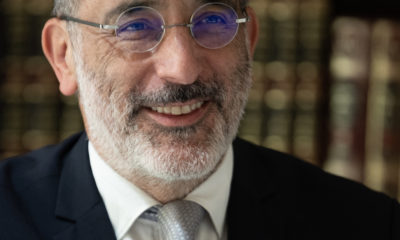
Parshot/Festivals

In the birth of a new year
Never in our lifetimes have we longed for a different kind of year to be born! When we recited Hayom Harat Olam last year as 5780 dawned, we could not imagine the year that was being ushered in!
And yet, the Jewish annual cycle comes around again, promising us the certainty of change. As we move into 5781, we hope to move into a different spiral and create a new becoming. How can Rosh Hashanah help us bring in new potential?
If one looks at theRosh Hashanah themes, we find two images of G-d: G-d as king, and G-d as birthing mother. Malchuyot, or kingship, is one of the three main themes in our Rosh Hashanah tefillah. This notion of kingship comes from the Talmud where we are told, ‘G-d said, Say before me on Rosh Hashanah Kingship, Remembrances, Shofar. Kingship so that you will put me over you as king’. At this time, we crown G-d as king over us.
Equally present, although slightly hidden in the prayers is the notion of G-d as birther, as Mother. ‘Hayom Harat Olam, Today is the birthing of the world’ we recite every time we listen to the blowing of the shofar. The word harat is profound and difficult to translate. We are given clues to its meaning in the first day Rosh Hashanah Torah and Haftarah readings. In the Torah portion, we are told about Sarah: ‘vatahar veteled’. After many years of infertility, Sarah conceived and gave birth. Analogously in the Haftarah we are told ‘vatahar Chanah vateled’, ‘and Chanah conceived and gave birth’. In both instances, ‘vatahar’ is ‘and she conceived’. In other words, harat implies that Rosh Hashanah is not the final act of birthing the world, rather it is the day our world is conceived.
In the Torah, conception is linked to longing. The women, Sarah and Hannah, did not become pregnant easily. They struggled terribly with akarut, or the experience of being ‘barren’, and yet they never stopped longing for a child. In a difficult Midrash, the Rabbis ask why did our matriarchs struggle with infertility? The answer given is that Hashem desires the prayers of the barren woman. It is vexing to imagine that G-d engenders suffering in women because he longs for our prayers. Yet, perhaps the ‘barren’ woman speaks to all human beings who experience true lack, and therefore long for something. Surely the prayer driven by longing is the deepest prayer, supplication from the soul.
If Rosh Hashanah is a day of conception, we need to think of it as a time of longing, a day when we return to those things that we long for, and we need to meditate on them, hopefully bringing them into conception and reality. As we say ‘hayom harat olam’, let us dare to imagine, dream, and long for the world in which we want to live and the people we want to become.
During this time of COVID-19, humanity has returned to longing. No longer able to rely on the materialistic distractions of our lives, we remember and long for the healing touch of a friend, the ease of interaction with grandparents, the ability to sing together in shul in unison, and dancing the Horah, one sweaty hand holding another, at a simcha. These, among many others, are losses brought about by this pandemic which we dare not forget. Longing is a panacea against forgetting.
A second idea linked to harat or conception, says Rabbi Sharon Cohen Anisfeld of Hebrew College, is that of holding something in a dark womb-like space until it is ready for life. There is a rabbinic idea that Hashem conceived of the world in Tishrei and then contained the idea of the world, which was only born into full life and bloom in Nissan, the month of Pesach and spring. At this time in our world, we may have a while to go before the ease of social interaction that we once knew can return. If the word haratreminds us to keep our longings alive, it also reminds us to have patience. New possibilities and new worlds require the capacity to wait. Never have TS Eliot’s words felt more true: “The faith and the love and the hope are all in the waiting.”
There is one aspect of harat that is realisable now. Rabbi Cohen Anisfeld writes that harat is always linked to relationship, for the conceived child is carried within its mother, just as the world is conceived within G-d’s matrix and care. In the words Hayom harat Olam, we are invited to consider that the conception of the world is inextricably linked to relationship.
While certain ways of human interaction are not available to us, the intimacy of deep conversation and vulnerability, the ability to stand in the presence of the other, albeit on Zoom or with two metres of distance, is utterly within our grasp. Even now, we are able to cry and mourn with each other, we are able to heal wounded friendships, we are able to remind people again that we love them. Perhaps more than ever, we need to cultivate relationship and step into vulnerable spaces, expressing our longing and love for each other. The planet is crying out for the embodiment of harat as ‘creation in relationship’.
Rosh Hashanah is deeply auspicious. It is the time of jasmine in our streets, and honey in our jars. It is the time of harat, the conception of life itself. Harat is about imagining the world we long for, developing the capacity to wait for its emergence, and practising empathy and relatedness now! These three practices, longing, waiting, and relating, will influence and help shape the new world, the new song, that is waiting to be born.
- Adina Roth is a clinical psychologist in private practice, and a teacher of Jewish Studies.










